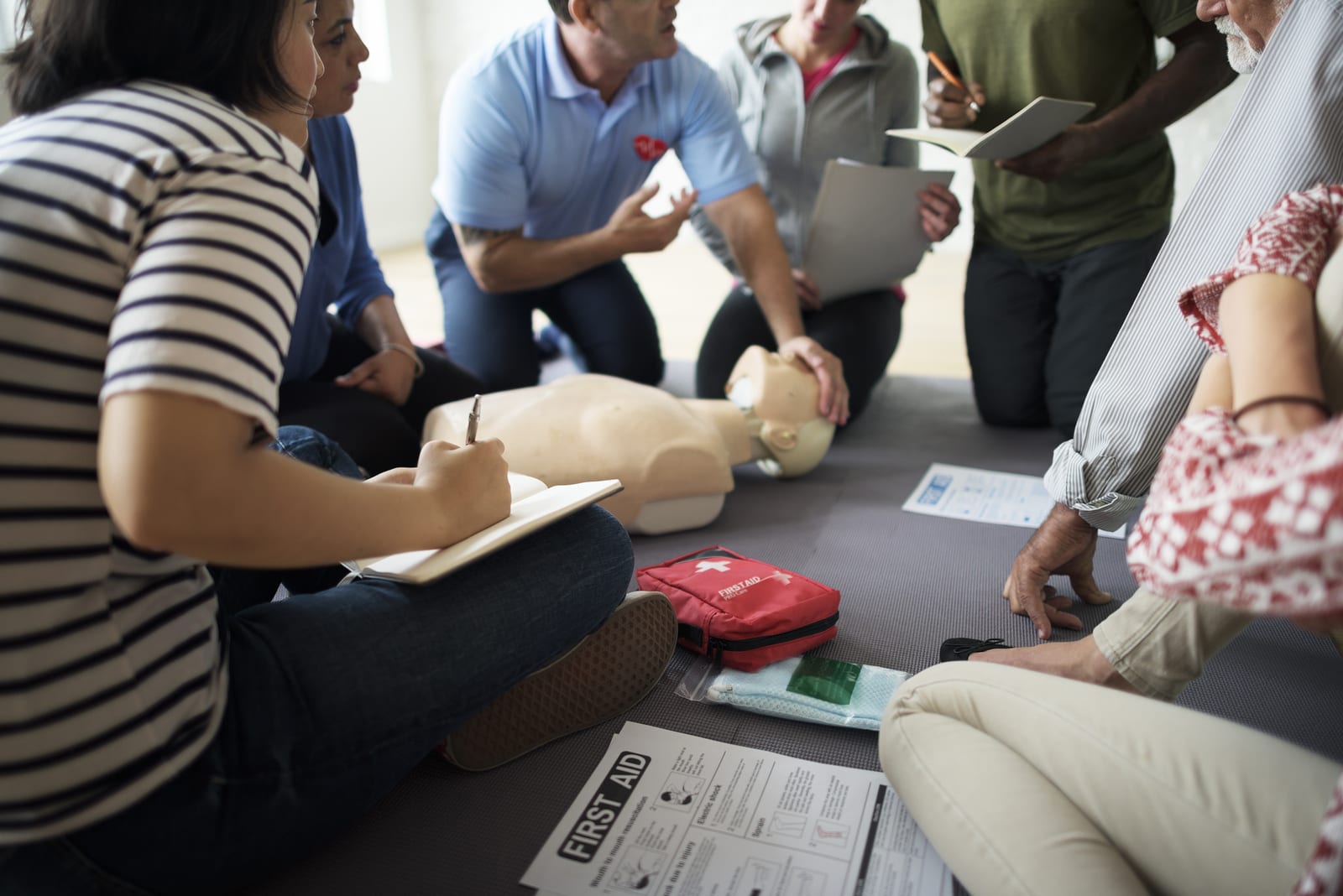Highlights:
- Bystanders play a critical role in saving lives, but lacking first-aid training can put victims at even greater risk.
- Experts warn that inadequate first aid knowledge can lead to fatal mistakes in emergency situations.
- Accessible first-aid training programs can empower individuals and communities to act confidently in crisis situations.

In those crucial minutes, bystanders become the first responders—but only if they know what to do. Unfortunately, most people lack basic first aid training, and that ignorance can sometimes cause more harm than good.
But why aren’t more people trained? And how can we change that?
Let’s dive in.
The Role of Bystanders in Saving Lives

Quick Response Can Improve Survival Rates
When an emergency strikes, every second counts. Studies show that immediate intervention significantly increases survival rates in medical crises such as cardiac arrest, choking, burns or severe bleeding.
- Cardiac Arrest: Performing CPR within the first few minutes of cardiac arrest can double or even triple survival chances.
- Choking: A bystander who knows the Heimlich maneuver can clear an airway obstruction before it’s too late.
- Severe Bleeding: Applying pressure and elevating the wound can prevent excessive blood loss, buying critical time until professionals arrive.
Real-life Incidents Prove the Power of First Aid
Take the story of David Thompson, a 45-year-old father who suffered a heart attack at his local gym. A bystander, trained in CPR, immediately sprang into action and kept David alive until paramedics arrived. Without that intervention, David might not have survived.
Or consider Sarah Kim, who saved a child from choking at a restaurant. She had learned the Heimlich maneuver years ago, never expecting to use it—but when the moment came, she was ready.
The truth is, anyone can find themselves in an emergency situation. The question is: Will you know what to do?
The Risks of Inadequate First Aid Training
Mistakes That Can Worsen the Situation
Without proper training, well-meaning bystanders can make errors that worsen the victim’s condition. Some of the most common mistakes include:
- Incorrect CPR technique, which can lead to broken ribs or ineffective chest compressions.
- Moving an injured person can cause spinal injuries.
- Giving water to someone having a seizure can cause choking.
Expert Warnings About Untrained Assistance
Dr. Emily Carson, an emergency physician, warns,
“Good intentions aren’t enough. Without proper training, people can unintentionally cause more harm than good.”
Unfortunately, misconceptions about first aid lead many to believe they know what to do—even when they don’t. That’s why proper training is so crucial.
Expert Insights on First Aid Education
The Power of First Aid Knowledge
First aid training isn’t just for medical professionals. According to Dr. James Li, a trauma specialist,
“First aid should be as common as knowing how to use a smartphone.”
Governments and health organizations worldwide are pushing for first aid education in schools, workplaces, and public spaces.
Countries like Germany and Sweden have integrated first aid training into driver’s license requirements—something other nations should consider adopting.
Overcoming Barriers to First Aid Training
Why Aren’t More People Trained?
Despite its importance, many people avoid first aid training due to:
- Cost: Some classes can be expensive, deterring people from signing up.
- Time Commitment: Busy schedules make it hard to find time for training.
- Fear of Doing It Wrong: Many people hesitate, worrying they might make things worse.
Affordable and Accessible Training Options
The good news? Many free online courses and organizations offer free or low-cost training, including:
- The Red Cross – Online and in-person classes available worldwide.
- American Heart Association (AHA) – CPR and first aid certification courses.
- Local Fire Departments & Community Centers – Many offer free training days.
- Alison offers free courses and certificates to learn everything. Sign up and search for first aid.
- YouTube offers unlimited practical videos.
Why Everyone Should Learn First Aid
Take the First Step Today
You never know when you might need first aid skills. Whether it’s a family member, a stranger on the street, or even yourself, being prepared can save a life.
Where to Start:
- Sign up for a local first aid class.
- Watch trusted online tutorials (Red Cross, AHA, etc.).
- Encourage workplaces and schools to offer first aid training.
Frequently Asked Question
What is the role of bystanders in first aid?
Bystanders can play a crucial role in providing initial assistance to a person in need. They can call for emergency services, administer basic first aid, and offer comfort and reassurance until professional help arrives.How can other people help in a first-aid situation?
What are the three aims of first aid?
The three aims of first aid are:
Prevent further harm
Promote recovery
Whose safety is most important during first aid?
What is the golden rule of first aid?
Who is the father of first aid?
What is ABC in first aid?
Who burns first aid?
Who are the fathers of emergency medicine?
Who is the godfather of medicine?
What is EM in medical terms?
Final Thoughts
Emergencies happen every day, and the best thing we can do is be ready. Learning first aid isn’t just a skill—it’s a responsibility.
So don’t wait. Take action today and become someone who can make a difference when it matters most.
Are you first aid certified?
Share your experience in the comments below, and don’t forget to spread the word—first aid saves lives!

